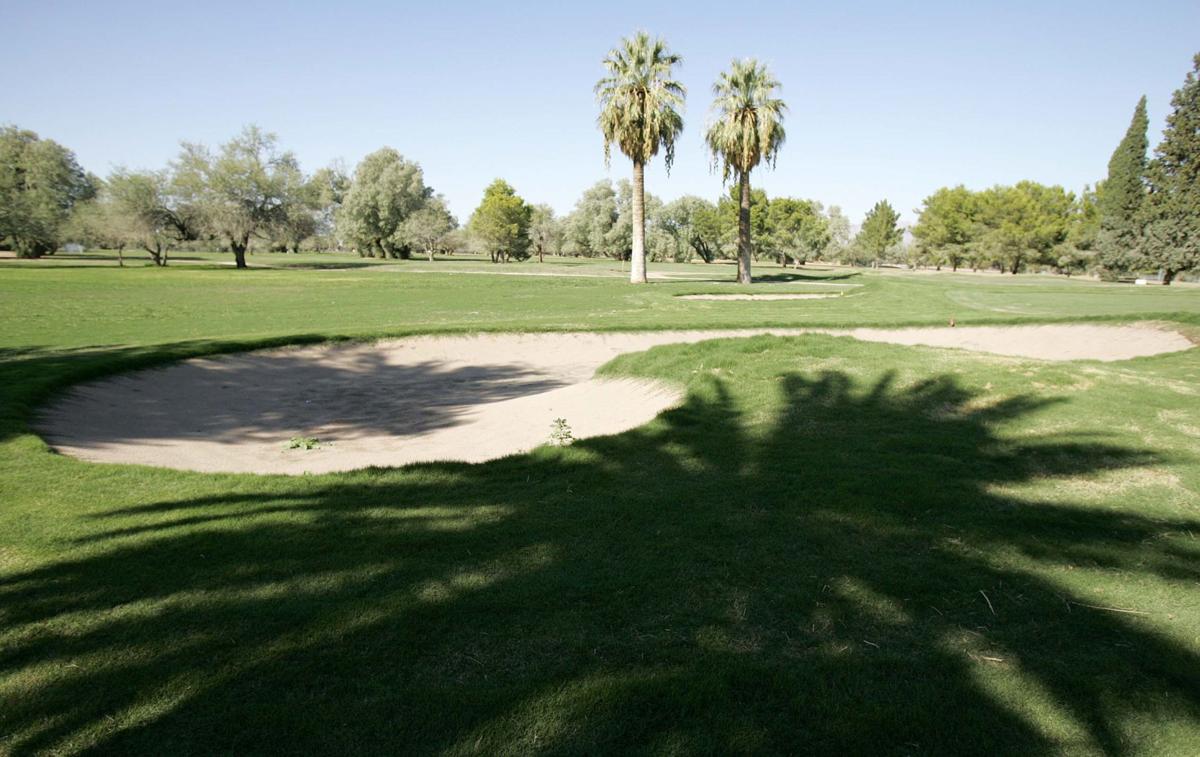When you play golf at the Blanchard Golf Course at Davis-Monthan Air Force Base, you are handed a scorecard that reflects societal changes since the course’s 1962 opening.
One of the scorecard ads is for a tattoo parlor. Another is for a smoke shop. A third is for an online agency that will book a cruise for you.
Blanchard Golf Course is 56 years old and it will not live to see 57. It will close April 30. It will shut down for the same reasons that Canoa Hills Golf Club and Santa Rita Golf Club closed: Life changed a lot, and golf didn’t change as much.
As recently as 2006, Arnold Palmer flew to Tucson to debut an Arnie-designed nine hole addition to the Starr Pass Golf Club. The man who caddied for Palmer that day was Robert Moreno, then the director of golf at Starr Pass, once home to the PGA Tour.
Golf in Tucson was prospering. The Ritz-Carlton people were in the process of building an ostentatious 27-hole layout on Dove Mountain that would host Tiger Woods and the world’s 64 leading golfers every February.
Today, the man who caddied for Arnie, Robert Moreno, is the general manager at Blanchard Golf Course.
Moreno is one of the leading names in Tucson golf since he became the pro at Green Valley’s Lee Trevino-inspired Torres Blancas Golf Club 24 years ago. In the days before debit cards, it wasn’t unusual for Moreno to put the weekend’s green’s fees in a large bag and take it to the bank for a cash deposit of $10,000 or more.
Torres Blancas, and most of the 50-something Southern Arizona courses, could charge in excess of $60 for a round of golf in the mid-1990s and be fully booked. Now? If you charge more than $40, you’ll hear the sound of crickets, not tee shots.
Unless military might and money stepped in — and it did not — the Blanchard Golf Course was destined to die.
It became too expensive to water the course appropriately. Changes in minimum-wage laws further chipped away at the bottom line. Even though Moreno was successful in growing golf at BGC, from about 24,000 rounds per year to close to 30,000, expenses rose by more than $100,000 per year.
More than anything else, access to the base became problematic. There are scores of available tee times for comparable prices at 30 other Southern Arizona golf courses. Blanchard is the only one that requires identification checks and a wait at the visitor’s gate.
And given Tucson’s I’m-from-somewhere-else demographic, thousands of golfers either didn’t know it was possible for a civilian to play at Blanchard, or, worse, didn’t know the base had a golf course.
It’s sad, because Blanchard is what the old Randolph South course used to be: flat and friendly. You could walk BGC in 3½ hours, eat a reasonably priced hot dog at the soon-to-close Eagles Nest restaurant, and not lose a sleeve of golf balls in a wash or the desert or anywhere.
Golf’s demise in the 21st century was triggered because the game is too difficult, too expensive and too time-consuming. Blanchard was a step back to the 1970s.
So now the 56-year-old golf course will be repurposed as a recreation area and forgotten.
A few days ago, Moreno played in a group with former Blanchard “cart kids” Sean Mullen and Brent Lingel, who went on to become golf pros in Tucson and in Texas, and now run Tucson’s Rolling Hills Golf Course.
“It was a memorable day, and in fact we made it 27 holes because we didn’t want it to end,” Mullen said. “I grew up at Blanchard. It was my first job and basically my second home. My dad, J.J., still works there. I have nothing but positive memories.”
Mullen broke 100, 90, 80 and 70 at Blanchard Golf Course. But it was much more than golf.
“In my 6½ years at Blanchard, “ he said, “I learned integrity, courtesy, honesty, humility, sportsmanship and all the gentlemanly qualities that golf teaches.”
When Moreno became Blanchard’s director of golf in the summer of 2016, the course was overgrown with weeds and dying from neglect. He hopped on a large mowing machine and began a fight to restore the course back to respectability.
Now the Blanchard Golf Course is green, trim and in some of the best shape of its life.
It is a golf course that will die too soon.





